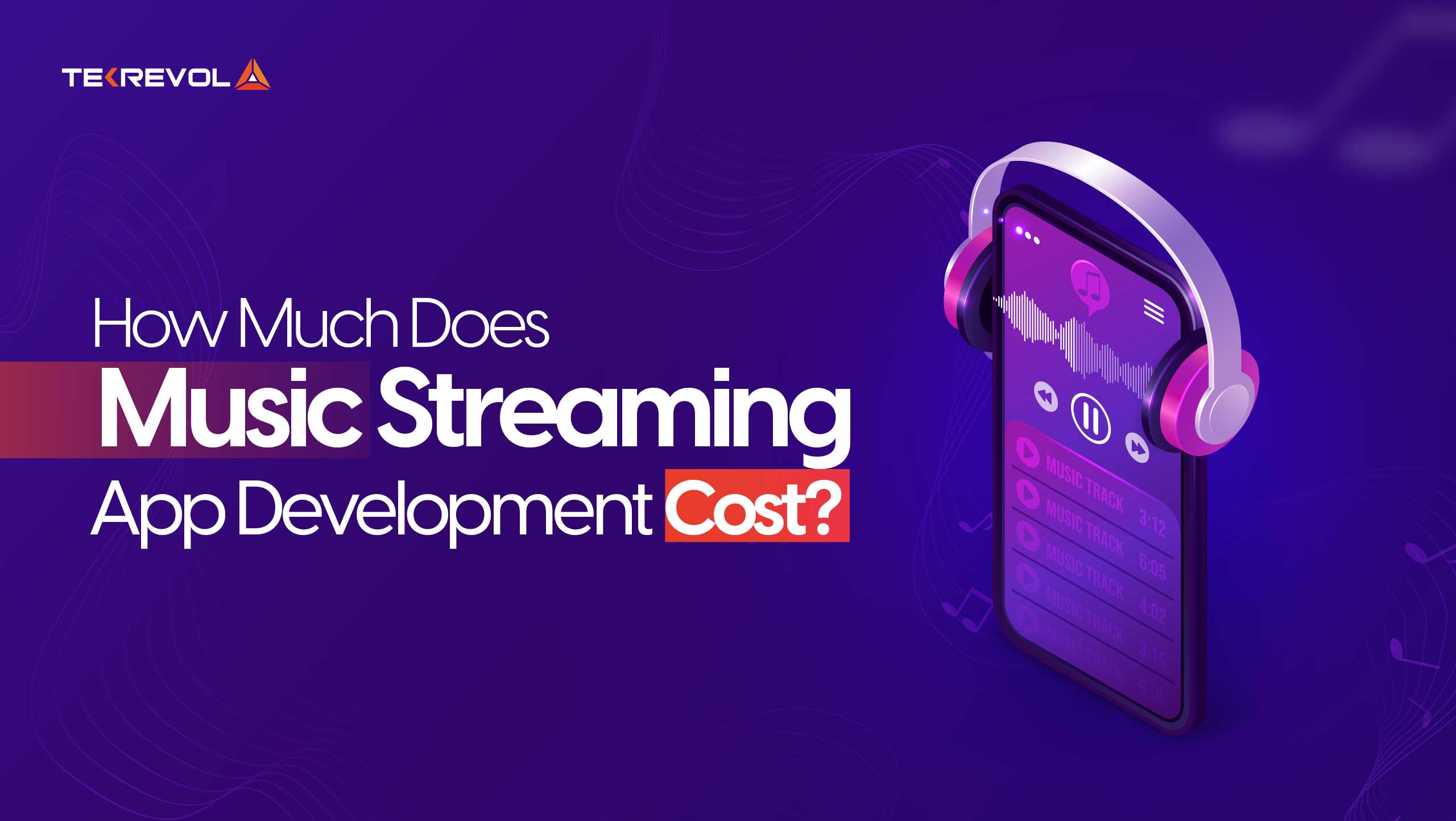You have an app for everything these days. From food delivery to car parking – the range seems endless. People want their day sorted out in seconds with just a click in this digital age. And rightfully so. If you can book a ticket to Miami with an app – why not schedule an appointment with the doctor?
Fortunately, you’re in luck. Medicine is exploring new horizons and is adapting a consumer-friendly and digital approach. We have apps now. People can sign-up, upload their prescription, and choose a doctor.
No one should rely on old-school medical visits now – telemedicine has given healthcare the boost it needs.
- Do you need a telemedicine app?
- We got you covered. At TekRevol – our developers can transform your app vision into reality.
Keep reading as we help you develop a fully-assembled, marketable doctor appointment booking app.
How The Market For Doctor Booking Apps Is Looking Like
Safe to say – you’re stepping into an emerging area where there’s a lot of growth potential. The idea of a doctor appointment app took off in 2016, and we have seen immense innovation since then. Apps are well designed now – far more adaptable. Figures show that the market foresees a US$ 400 million growth – from 2018 to 2026.
By the late 2020s – you’ll be at the top of your game in a market that’s valued at around US$ 650 million and projected to grow even more. We expect a CAGR of 8.3% over the next four years until 2026.

Source: Mordor Intelligence
What do people want? Everyone is digitally aware now. In 2019, Accenture concluded that 69% of consumers would consider your product if it included follow-up appointment reminders or email support. There’s a lot in demand – let’s just say.
Keep your step in the right direction and see what people want from doctor booking apps. On-demand appointment apps will be the norm from North America to the MENA region. Plan accordingly and prepare for the future.
Features You Should Include In Your Appointment App
|
Smart Search |
Create an interactive experience for patients. Let them filter doctors out based on – experience, location, reviews, etc.
Cost and time matter – allow them to search for different hospitals and services. |
|
Doctor Credibility |
When a patient clicks on a “doctor profile,” – they should expect to find all their credentials in full detail
Records like – education, experience, the field of expertise, and patient feedback should be public knowledge. |
|
Manage Appointments
|
Design your app so that patients can easily schedule their appointments – including instant cancellation and rescheduling options.
Plan out the entire calendar look during the development stage – patients should be able to book a slot in a single glimpse. |
| Alert Patients | Create a consumer-friendly experience by showing that you care. Push notifications are “best” when it comes to customer retention.
Integrate your app with Gmail and iMessage or any platform you find suitable – the goal is to alert patients when they’re running late or have forgotten about their meeting. |
Other than the features we just highlighted – we have different ideas in mind – incorporate them all, and you’ll have the perfect app. Here, take a look:
1. Book in one go
- When in a hurry, one click. That’s all it should take. Let people choose a doctor in seconds. Create an experience. Keep it minimalistic and to the point.
- Save all information constantly. If a patient leaves halfway through an appointment and opens the app another time – a prompt “book” feature should pop up.
2. Payment getaways
- When we talk about digitalization – allowing consumers to pay with their desired payment method will build trust and simplify things.
- Whether it’s PayPal, Amazon Pay, Square, or even any sort of cryptocurrency – make your app accessible for all.
3. Customer support
- Here – chatbots and live chats come into play. Both are necessary but giving patients the option to choose their experience will help in the long run.
- Chatbots, in particular, can help your app gain traction. They can be programmed to meet healthcare standard questions. We predict a bright future for the chatbot industry – read more here. But many medical queries will require an actual person’s input – make sure you include both.
4. Digital walkthrough (documents and prescriptions)
- Ease of access. When a patient consults your app, you need to facilitate them to the max. Create an interface where patients can upload their medical history or any sort of report – that the doctor should be aware of.
- Once a patient is done with the appointment – prescriptions should be on their phone. Integrating the doctor appointment booking app with Google Maps makes it even easier. Let patients navigate to the nearest pharmacy.
For the clinical side
Even from the perspective of healthcare providers, a doctor appointment booking app has revolutionized the way they operate. With a broader range of patients and fewer operating costs, it’s a win-win situation. When businesses had to deal with the pandemic, they quickly realized this fact and used it. Going digital.
Create a worthwhile experience from the other side too. High rated scheduling apps embrace having an:
- Interactive dashboard – here, hospitals can look at patients’ data. A clinical growth chart, confidential information, appointment slots, everything should be easily accessible. Do include AI-based feedback. It will give hospitals the room to improve their management system altogether.
Does this help healthcare organizations save money?
Yes, most definitely. When everything is automated through a doctor appointment app – it makes things more transparent and opens room for the clinical side to improvise quickly.
Let’s assume a patient misses their appointment, and the slot goes wasted – with the help of an app, you can use a “reminder” notification to alert them again. The appointment gets rescheduled, retaining a patient’s trust and saving the cost as well.
Often, people used to have issues with their appointment timings. Frequent delays were very common. The lack of a “set” time was because of manual bookings – causing both financial and customer retention loss.
Healthcare shifting to a digital setup changed everything for the better. Both patients and clinics get the privilege of “prompt action” – something that is very important in this day and age.
Read more: A Guide On Mental Health Apps: Development Ideas, Cost, And Monetization Models
Top 10 Applications Of Machine Learning In Healthcare
Build A Doctor Appointment App – Follow These 5 Steps
Now that you have an idea – what the industry looks like and how you need to proceed – get on board with your doctor appointment app idea and build one. Here’s what we suggest you do in this step-by-step guide:
1. Market research
Before launching any startup – researching, looking around, and trying to find the best possible solution is the first step. You already know enough about the development in telemedicine and what the upcoming projection is. But now, we’ll look at what people and potential competitors think or do.
What patients think
Once you know what your target audience demands in a booking app – it’ll set you apart from other apps. Your approach is more personal. To learn more about consumer journey – we looked at reports from Kyruus Patient Access Journey Report 2021:
- Over 60% of consumers prefer searching online when considering a new healthcare organization.
- Since 2017 – there’s been a 15% increase – Millennials and Gen Xers now prefer booking an appointment through an app or a website. While Baby Boomers are still catching up.
- Apart from searching for a better insurance plan and seeing how qualified the doctors are, appointment availability is one of the top concerns of consumers today.
What we conclude is that – the internet plays a significant role in helping people find the right healthcare solution, no matter the demographics. The report further concluded that 83% of consumers considered appointment availability as “most important” during a survey.
What your competitors do
Research and learn from their mistakes. Right now, the biggest gap in the market, according to figures, is:
- only 35% of doctor booking apps allow new patients to get an appointment upfront without signing up. When you take a new patient to go through the hassle of creating an account on a platform – it is considered an obstacle.

- Also, consumers want an app where they can filter out cost, location, appointment availability, but most importantly – virtual care. The pandemic has made virtual care a necessity, and surprisingly, many competitors haven’t realized its potential. Only 15% of healthcare apps allow patients to sort/filter virtual care.
- And while our competitors understood the significance of an appointment option, only 5% out of the top 20 US healthcare systems showed real-time slot availability. Do explore this area.
The point is – don’t get overwhelmed by seeing already established apps. There’s a lot of room for growth. Explore untapped areas.
2. Design and test
Before getting a fully-fledged app, explore a prototype, and try to improvise. Take your creative vision and try to incorporate it into an app-like setting basically. Ask the clinic you’re partnering with for a database of doctors and get started.
When we talk about creative vision – obviously, the way your brand wants to conceptualize its image matters, but feedback from both patients and the clinical side is necessary here. The UI/UX design you come up with should go through different perspectives – learn and adapt.

And then, finally, test it out. A prototype will save you from early development stage chaos – you will learn which features will work with your vision and how they go along with consumers.
We recommend you rely on either of the three tools to develop a quick blueprint of a booking app:
- InVision
- Adobe XD or Adobe Illustrator or Adobe Photoshop
- Sketch
- Figma
3. Security compliance
Digital setup also means potential hazards, especially as we’re dealing with confidential medical data over here – you need to build trust among consumers. In the US – your app needs to meet HIPAA regulation standards or California Consumer Privacy Act (CCPA) – depending on the region.
Telemedicine research reports show that healthcare systems faced numerous cyber threats in 2020 alone. There is a 117% increase in website/IP malware security alerts and data breaches, reaching up to 50% in most cases.
Apart from HIPAA, keep your app aligned with these requirements in particular for Europe and other regions:
- General Data Protection Regulation (GDPR)
- Health Information Technology for Economic and Clinical Health Act (HITECH Act)
- Secure Sockets Layer (SSL)
Read More: What Is App Security – The Complete Process And The Tools & Tests To Run It
4. Choose an app development company
Now comes the fun part – who do you collaborate with to create an on-demand doctor appointment booking app? Choosing a mobile app development company can be an overwhelming decision. We recommend you do thorough research until you are satisfied and know what to expect – the fewer surprises, the better.
Again – we’d suggest you ask a software hub to create a prototype version, and if that goes well, progress further. All your queries and expectations related to the app would get solved right away, and you’d know how well they accommodate their clients.
Normally – this is the “tech” toolkit that developers should be well versed in:
- Coding stage: Swift for iOS and Java for Android
- Development stage: ReactJS/Angular (frontend) and Python/NodeJS (backend)
- Backup tool: Google Cloud or Microsoft Azure
- Making communication possible: Twilio or OneSignal
- Helping patients navigate: Google Maps API or Mapbox
So, here are just a few points you should keep in mind during your search:
- Does it match your brand strategy? Do they work on healthcare applications?
- How far will the company take your product? Do they offer long-term app support?
- Are they willing to negotiate? Is the price worth it?
And lastly… will the product meet high standards? Does it match the quality you were promised?
- Develop a doctor appointment booking app by collaborating with us!
- At TekRevol – our developers and creative heads can take your vision to new horizons.
5. Launch and maintain app support
This is it – now it’s out there for millions to see. Roll out with the beta phase and rely on initial feedback for future evaluation. Be in direct contact with the quality assurance team – they have been here since development stage – responsible for keeping a check on potential bugs and glitches.
Make sure you sort out all sorts of feedback from patients and medical personnel during early stages. In the beta stage – A/B testing works really well here. You present different scenarios to consumers and improve the app based on their judgment.
Later, once your app starts hitting new benchmarks and reaches the mainstream stage – you will need to reevaluate everything. More people, more growth – update the app as well. You can work on optimization, adding new content, and even updating the entire interface altogether.
Read More: Doctor On Demand App Development: Transforming Healthcare
How Much Does It Cost To Build An Appointment App?
So, if we were to give you a range – a doctor appointment booking app can cost you anywhere around $45,000 to $85,000 – depending on the complexity. There are a lot of factors to consider as well – the design, features, app architecture, the company you partner with, and the region you opt for.

There are a lot of numbers floating around – and you might have realized at this point that the region you consider will influence the cost. Plus, there are other stakeholders too. To develop a doctor appointment booking app – all these professionals have to play their roles:
- Project Manager
- UI/UX Designer
- Backend and Frontend Developers
- App Developers – iOS and Android
- Quality Assurance Engineer
- Business Analyst
The wide difference in their roles is also reflected in the “wage” part. A scheduling engine for your app will require massive support. However, there are friendly alternatives too. You can consider a cross-platform approach and work with React Native for example.
Take A Look At These 3 Doctor Appointment Apps
We suggest you look at top-ranking doctor appointment apps. Develop a sense of how things work. So, here are 5 apps:
1. Teladoc

What they do: Teladoc is a telemedicine company that specializes in virtual care and hopes to empower patients by helping them schedule instant appointments for therapy, nutrients, or general care.
What sets them apart: Patients can upload images of their skin and get an instant diagnosis. Get on call and have your acne or eczema checked. Teladoc provides patients with dermatology care.
Revenue: $565 to $571 million
Download right now: iOS – Android
2. Zocdoc

What they do: Zocdoc helps patients find a doctor near them. Schedule an appointment with a doctor and get on-demand treatment. Zocdoc facilities patients with both video call and physical consultations.
What sets them apart: An award winning app – patients can scan their insurance card and find doctors according to their plan. There are more than 50 categories – dermatologists, dentists, general care doctors, and far more.
Revenue: $150 to $170 million
Download right now: iOS – Android
3. MDLIVE

What they do: MDLIVE is a medical marketplace where patients can sign-up, get an appointment, and feel better. MDLIVE took off from Florida and now helps millions of people get quality health care.
What sets them apart: Licensed therapists and board-certified doctors. MDLIVE thrives on building trust and offers 24/7 virtual care services.
Revenue: $130 to $156 million
Download right now: iOS – Android
What We Recommend
In one word – proceed right now and transform your vision into a full-on app. You have seen market trends. You know how telemedicine and booking apps are projected to perform over the next decade. Conceptualize, design, and execute – that’s what we say. No excuses. Start from scratch. We’ll take it from there.
What We Do
At TekRevol – our experience with helping people become a better version of themselves isn’t far off. For AMJ Wellness – we created an app that facilitates employees at workplaces.
A fitness-focused mobile app built for companies that want the best for their employees and to improve their organizational performance. We acknowledged the problem, worked on an app idea, and developed a TekRevol exclusive solution.
Check out our case study: AMJ Workplace Wellness.










